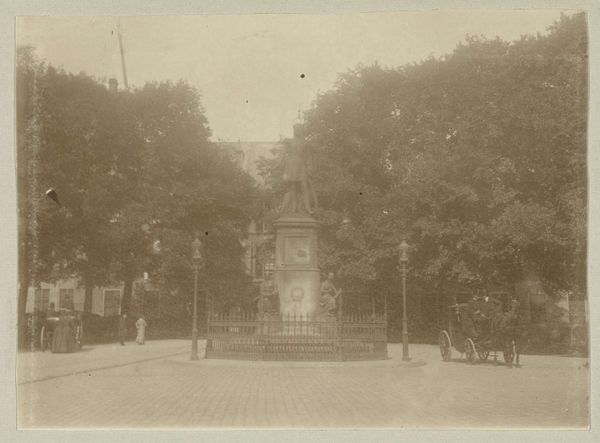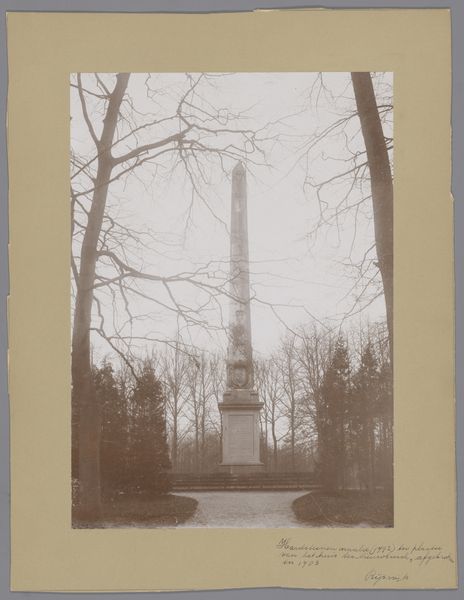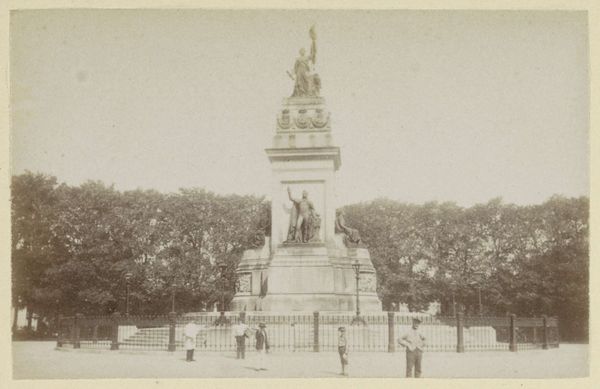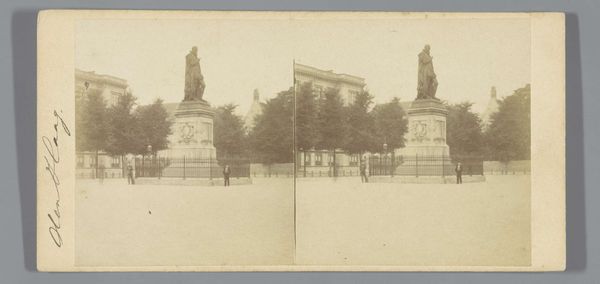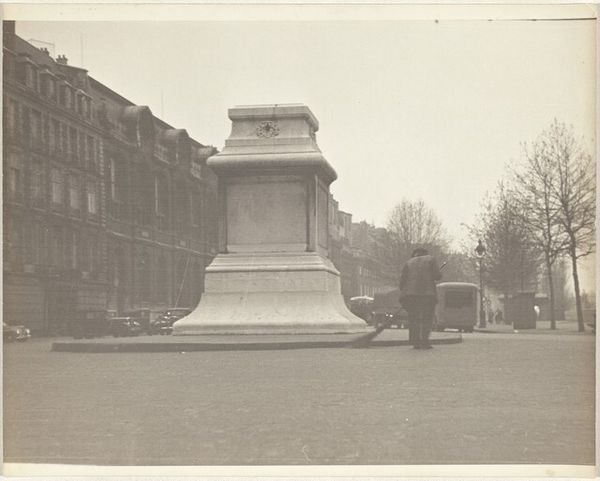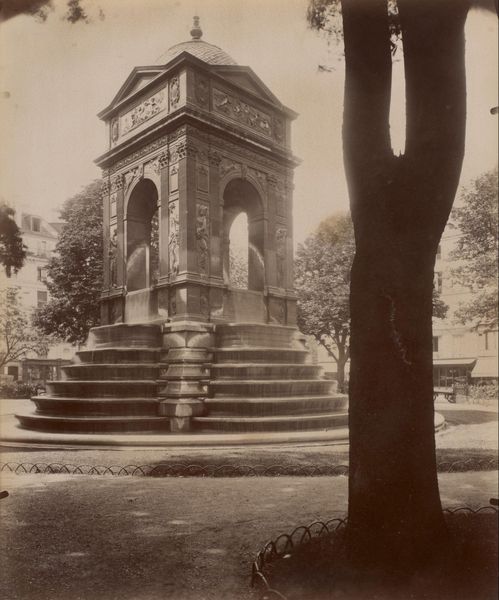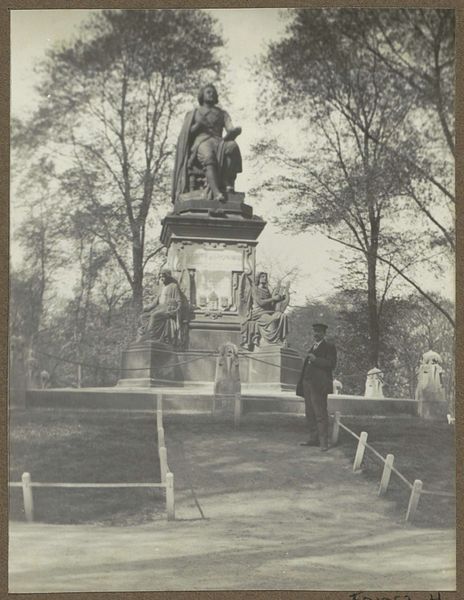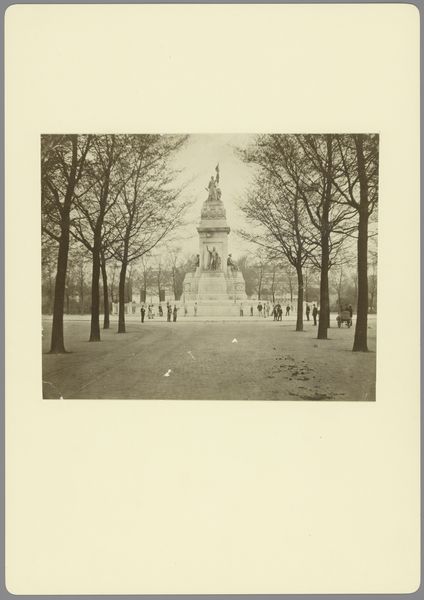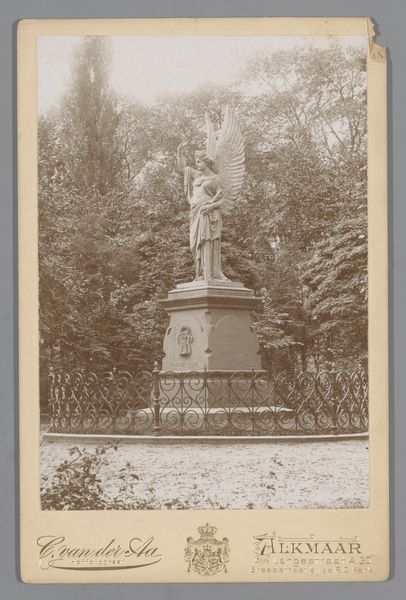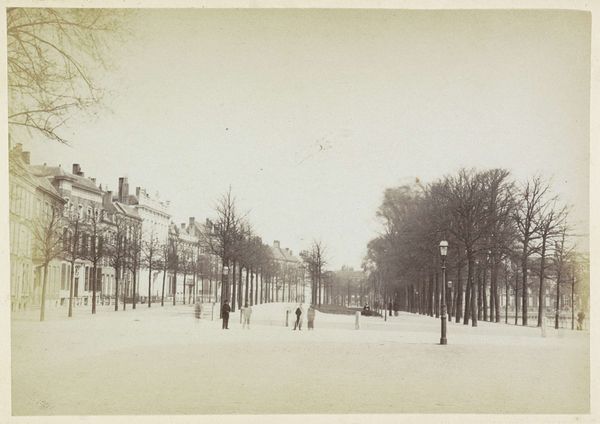
Gedenkteken voor de Hertog van Saksen Weimar aan het Lange Voorhout in Den Haag c. 1865 - 1870
0:00
0:00
photography, sculpture
#
excavation photography
#
statue
#
landscape
#
photography
#
sculpture
#
cityscape
Dimensions: height 94 mm, width 133 mm
Copyright: Rijks Museum: Open Domain
Editor: Here we have a photograph from around 1865-1870 by Andries Jager, titled "Gedenkteken voor de Hertog van Saksen Weimar aan het Lange Voorhout in Den Haag"—which translates to "Memorial to the Duke of Saxe-Weimar on the Lange Voorhout in The Hague". It feels incredibly formal, with that statue looming large in the middle of what I imagine is a very important square. How should we interpret such a deliberately posed image in a public space? Curator: The very existence of a photograph like this speaks to the increasing importance of public art and its representation. Photography in the mid-19th century served not only to document but also to disseminate idealized images of power and civic virtue. Think about the purpose of such monuments: they were intended to shape public memory and reinforce particular narratives of leadership. Editor: So, the photo isn't just capturing a statue, it's capturing an *idea* of leadership? Curator: Precisely. Consider where this monument is placed—a prominent location within The Hague, suggesting its intended audience was the public itself. Ask yourself, who was the Duke of Saxe-Weimar and what values did this monument aim to project? How might the social and political context of the time have influenced its design and reception? Editor: I guess the city wanted to broadcast certain ideals of the Duke and what he stood for to the public? Curator: Exactly. The choice to create a statue, and then photograph it for wider distribution, points to a carefully managed public image. What might that image have been aiming to convey? Was it successful? Editor: This has definitely made me see beyond the simple documentation and appreciate how carefully the image would have been planned! Curator: And remember, the act of photographing the monument transforms it further, allowing it to be consumed and understood within a broader cultural landscape. Think about who might have seen this image and what message they were meant to take away from it.
Comments
No comments
Be the first to comment and join the conversation on the ultimate creative platform.
